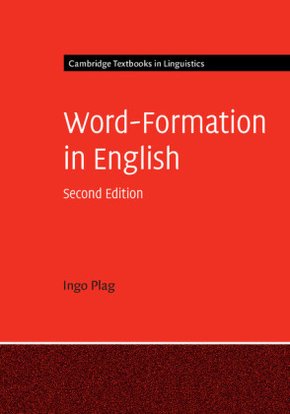| Verlag | Cambridge University Press |
| Auflage | 2018 |
| Seiten | 258 |
| Format | 17,4 x 24,6 x 1,2 cm |
| Gewicht | 530 g |
| Artikeltyp | Englisches Buch |
| Reihe | Cambridge Textbooks in Linguistics |
| ISBN-10 | 1316623297 |
| EAN | 9781316623299 |
| Bestell-Nr | 31662329UA |
The book enables students with little prior knowledge of linguistics to engage in their own analyses of complex words.
This book is the second edition of a highly successful introduction to the study of word-formation, that is, the ways in which new words are built on the bases of other words (e.g. happy - happy-ness), focusing on English. The book's didactic aim is to enable students with little or no prior linguistic knowledge to do their own practical analyses of complex words. Readers are familiarized with the necessary methodological tools to obtain and analyze relevant data and are shown how to relate their findings to theoretical problems and debates. The second edition incorporates new developments in morphology at both the methodological and the theoretical level. It introduces the use of new corpora and data bases, acquaints the reader with state-of-the-art computational algorithms modeling morphology, and brings in current debates and theories.
Inhaltsverzeichnis:
Preface to the first edition; Preface to the second edition; Abbreviations and notational conventions; Introduction: what this book is about and how it can be used; 1. Basic concepts; 1.1. What is a word?; 1.2. Studying word-formation; 1.3. Inflection and derivation; 1.4. Summary; Further reading; Exercises; 2. Studying complex words; 2.1. Identifying morphemes; 2.1.1. The morpheme as the minimal linguistic sign; 2.1.2. Problems with the morpheme: the mapping of form and meaning; 2.2. Allomorphy; 2.3. Establishing word-formation rules; 2.4. Multiple affixation and compounding; 2.5. Summary; Further reading; Exercises; 3. Productivity and the mental lexicon; 3.1. Introduction: what is productivity?; 3.2. Possible and actual words; 3.3. Complex words in the lexicon; 3.4. Measuring productivity; 3.5. Constraining productivity; 3.5.1. Pragmatic restrictions; 3.5.2. Structural restrictions; 3.5.3. Blocking; 3.6. Summary; Further reading; Exercises; 4. Affixation; 4.1. What is an affix? ; 4.2. How to investigate affixes: more on methodology; 4.3. General properties of English affixation; 4.3.1. Phonological properties; 4.3.2. Morphological properties; 4.3.3. Semantic properties; 4.3.4. Classifying affixes; 4.4. Suffixes; 4.4.1. Nominal suffixes; 4.4.2. Verbal suffixes; 4.4.3. Adjectival suffixes; 4.4.4. Adverbial suffixes; 4.5. Prefixes; 4.6. Infixation; 4.7. Summary; Further reading; Exercises; 5. Derivation without affixation; 5.1. Conversion; 5.1.1. The directionality of conversion; 5.1.2. Conversion or zero-affixation?; 5.1.3. Conversion: syntactic or morphological?; 5.2. Prosodic morphology; 5.2.1. Truncations: truncated names, -y diminutives, and clippings; 5.2.2. Blends; 5.3. Abbreviations and acronyms; 5.4. Summary; Further reading; Exercises; 6. Compounding; 6.1. Recognising compounds; 6.1.1. What are compounds made of?; 6.1.2. More on the structure of compounds: the notion of head; 6.1.3. Canonical and non-canonical compounds; 6.1.4. Summary; 6.2. An in ventory of compounding patterns; 6.3. Nominal compounds; 6.3.1. Headedness; 6.3.2. Interpreting nominal compounds; 6.3.3. Stress assignment; 6.4. Adjectival compounds; 6.5. Verbal compounds; 6.6; Neoclassical compounds; 6.7. Compounding: syntax or morphology?; 6.8. Summary; Further reading; Exercises; 7. Theoretical issues: modelling word-formation; 7.1. Introduction: why theory?; 7.2. Phonology-morphology interaction; 7.3. Affix ordering; 7.4. The nature of word-formation rules; 7.4.1. Morpheme-based morphology; 7.4.2. Word-based morphology; 7.4.3. Analogy; 7.4.4. Naive Discriminative Learning; 7.4.5. Summary; Further reading; Exercises; Answer key to exercises; Chapter 1; Chapter 2; Chapter 3; Chapter 4; Chapter 5; Chapter 6; Chapter 7; References; Index.

